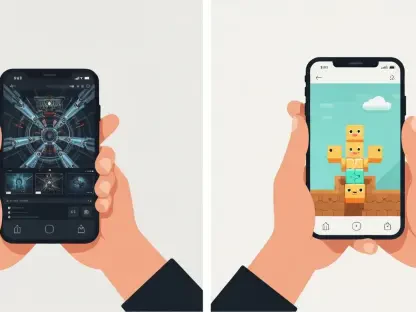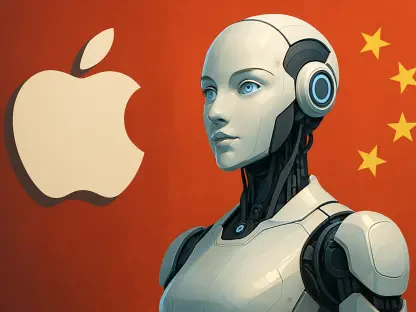Most signs point to the fact that the hypothetical future described in cyberpunk novels is already here—almost everything is now digitalized and people conduct most of their activities online. Today, alternative virtual realities are just a click away, and gaming industry leaders are trying to strategically position themselves as major players in this promising ecosystem. With technology unfolding at a never-before-seen pace and the proliferation of VR and AR creating significant opportunities, mobile gaming in the metaverse is the next step toward full immersion in other universes.
In this article, we look at how technology has evolved over the last decades and how it ultimately brought science fiction concepts into reality, creating new worlds through mobile games—and the role the metaverse plays in all of this.
A Brief Overview of the Metaverse
The metaverse has attracted a lot of attention in recent years, especially since Mark Zuckerberg announced the renaming of Facebook’s corporate identity as Meta and a $10 billion investment in virtual reality-related hardware, software, and content. As of 2022, the company has invested $36 billion in the metaverse. Other tech titans (including Google, Microsoft, Apple, and Roblox) are also spending heavily on the concept, boosting consumer confidence that it will eventually flourish.
The notion of a metaverse is by no means a new one—it was first introduced by American author Neal Stephenson in his 1992 cyberpunk novel Snow Crash. Stephenson’s work of fiction describes it as a successor to the Internet, a shared surreal place, made available to Earth’s inhabitants over the worldwide fiber-optic network, and accessed through virtual reality goggles. In the 30 years that have passed since the SF novel was published, elements of this description of the metaverse have found their way into reality.
Today, the term is used to define many types of augmented online environments, based on the same vision of a shared, deeply engaging, 3D-simulated universe where people can immerse themselves and experience different realities. Simply put, the metaverse refers to technologies that enable individuals to become part of interconnected digital worlds through certain gadgets. Some of these devices—especially VR and AR—are evolving at a rapid pace and are quickly becoming accessible to the masses. Other critical components of the metaverse, such as adequate bandwidth or interoperability standards, are likely years away or may never be realized.
However, some steps toward fulfilling those visions have already been taken, and given McKinsey’s prediction that the metaverse will reach $5 trillion by 2030, they might be too significant to ignore.
Gaming in Alternative Realities
As the metaverse has gained dramatic notoriety, an increasing number of marketers and app developers are using the term to describe certain features of their virtual products. The gaming industry is a particularly good terrain for this emerging technology—by definition, the metaverse combines gaming elements with augmented and virtual reality, NFTs, and the blockchain. While game makers have been using variations of virtual and augmented reality for some time, the metaverse is set to completely revolutionize the industry as we know it. According to a study conducted by Globant and YouGov, 52% of US gamers believe the metaverse will transform gaming, and 41% see its impact as positive.
When playing games in the metaverse, real people enter alternate digital universes, where they interact with others as avatars. The activities are usually similar to those in the physical world—players are part of a community, they work together toward a goal, and create, buy, and sell items. Unlike traditional online games, there are no pauses, resets, or game-overs in the metaverse. In addition, high-speed Internet, AR technology, and powerful VR headsets contribute to a much more realistic experience.
The Future of Gaming is Mobile
As society shifts from large devices to small and portable gadgets to perform most tasks—from online communication and web browsing to banking—smartphones have also become the preferred alternative for gaming. Millennials are the leading generation when it comes to playing on mobile devices, with 82% of them gaming preponderantly on their smartphones. Perhaps not coincidentally, 91% of US marketers said they would target millennials with their metaverse strategy, according to the latest data by Statista. Furthermore, a recent study by software company SensorTower showed that the gaming industry leads the way when it comes to using the keyword “metaverse” in the titles or descriptions of apps. This indicates that marketers’ action plans for tapping into the metaverse will be primarily focused on mobile games.
Some developers are already approaching augmented reality by building metagaming elements into their apps: features like play to earn, avatars, virtual worlds, and digital economies are introduced to the core gameplay. Many of these metaverse-like experiences can be easily accessed through mobile devices with fast Internet connections. For example, Cyberpop is a user-generated platform that mixes elements such as exploration, x-to-earn, and combat, with a virtual, blockchain-based economy. Similarly, Sandbox offers world-building and game-building features and gives players complete control over the Ethereum blockchain used to create its metaverse. Both games are already available for download on iOS and Android devices via App Store and Google Play Store, respectively.
That being said, the full potential of the metaverse can only be reached through VR headsets. This is mainly because a high level of processing power is required to enable the depth of graphics and real-time interaction between users. Furthermore, VR technology provides the most accurate feeling of being fully immersed in another world, which is the fundamental purpose of the metaverse.
We are currently seeing significant advances in VR technology, as Oculus has expanded its product line beyond PC-dependent headgear with external tracking to widely available portable devices by launching its Quest 2. The full-blown metaverse will also require full-body tracking capabilities. In a recent study, Meta researchers presented a framework powered by a neural network, which is able to approximate a full-body position using tracking data from the Quest 2 and its controllers alone. Likewise, Microsoft has launched Xbox Cloud Gaming, which runs on mobile devices. This is another step toward the metaverse vision of fully integrated experiences on mobile.
Metaverse certainly offers many opportunities for mobile app developers, especially in the digital gaming field. However, it is still in its early days—for the metaverse to truly flourish, greater availability of high-speed networks is required. And that’s before we get to the broader issues of surveillance, regulation, and legality. Nonetheless, one thing is undeniable: mobile will likely be the preeminent platform for gaming in the metaverse, as it gives people the ability to enjoy its marvels anytime and anywhere.
The Bottom Line
Given the rapid pace of technological development, most evidence suggests that the reality described in cyberpunk novels is starting to materialize. But things may not be as simple as they seem, and it remains to be seen whether the metaverse is the imminent future it is portrayed as, or whether it will remain an unfounded hope. If the concept does indeed evolve into what science-fiction writers, technology giants, and industry experts have envisioned, mobile gaming would certainly be the perfect playground for it.









